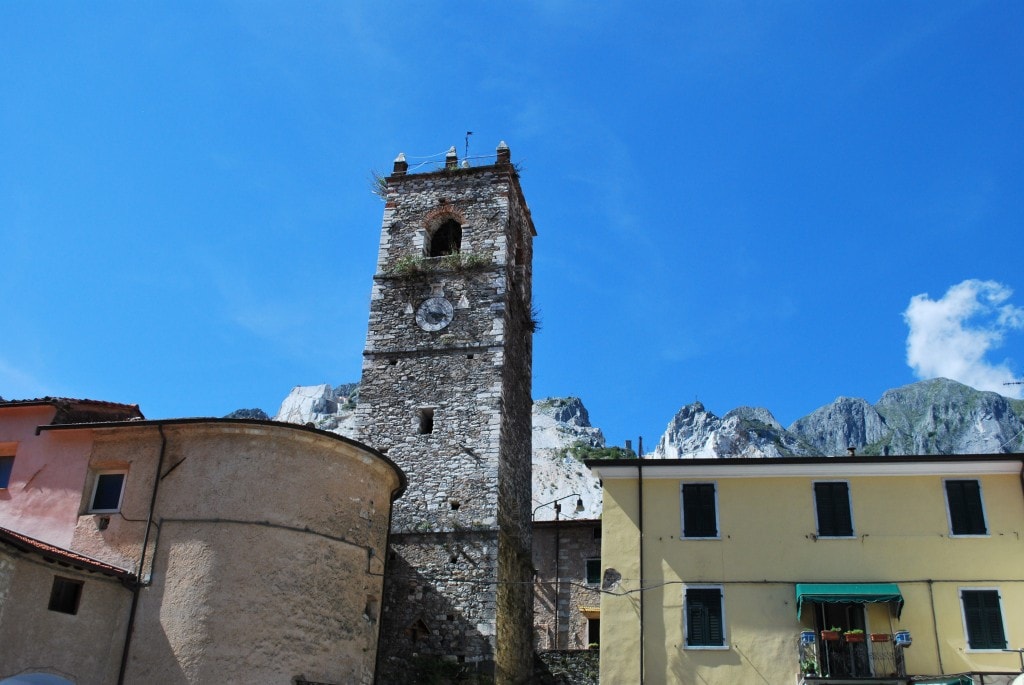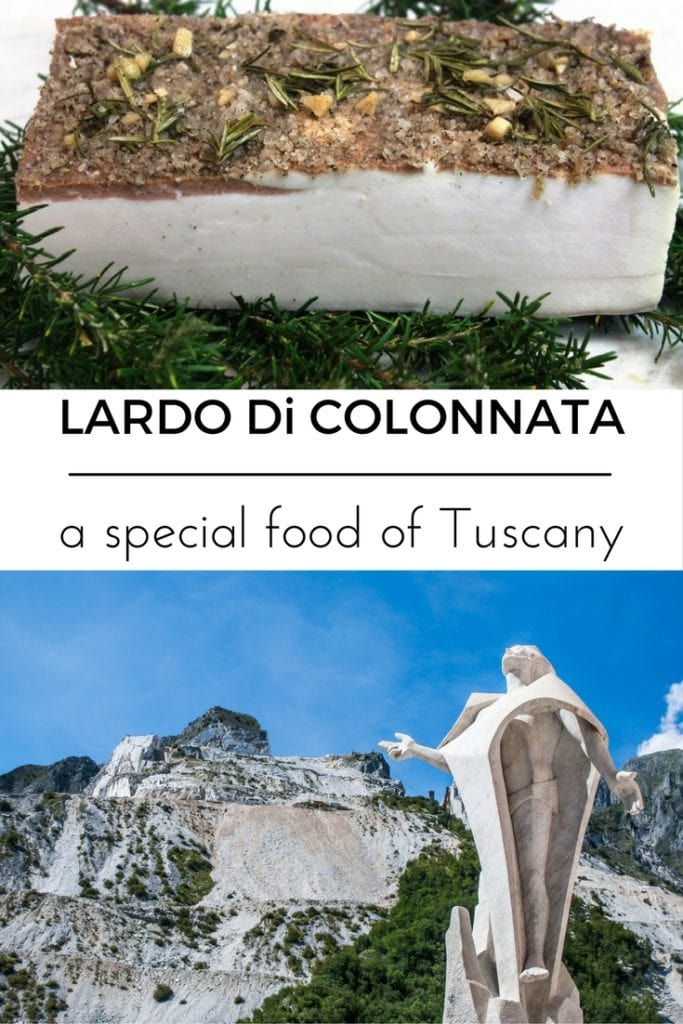Lardo di Colonnata. If you are a foodie I am sure you already heard about the lard from Colonnata. For those who have never heard of it, I am talking about a real delicacy of Italy, coming from a small village in northern Tuscany. Basically, it is a strip of cured pork fat. What makes it so special is the processor of production and curing, and its flavor. Its unique taste compatibility makes it one of the best ingredients to prepare a delicious bruschetta.
Something about the village of Colonnata
Colonnata is a small town of no more than 300 inhabitants, situated among the Apuan Alps at around 540 meters above sea level, near the white marble quarries. Thanks to the Lardo, the number of visitors sometimes exceeds the number of residents who come by car up through the Alps every year to see this small imprisoned village wedged between the white facades of rock.

Colonnata is a small mountain hamlet in the municipality of Carrara. Great marble caverns surround the village. The same white, transparent marble has been used for centuries to make sculptures and some of the greatest architectural monuments in Italy and worldwide. But marble is not only used in sculpture. Even Michelangelo, who climbed the peaks of the Apuan Alps 500 years ago in search of the finest marble, knew the other use of marble. Since time immemorial, in fact, marble workers used the smaller pieces to create basins in which Lardo, a fundamental part of the local diet, is stored.

How the Lardo di Colonnata is made
The Lardo di Colonnata is so famous that many Italian producers try to copy it with bad results. It consists of curing strips of pork taken from the pig’s back. Traditionally, producers from Colonnata cut the pork meat in January. The rectangular slices have a width of at least 3 cm and a weight between 250g to 5kg. They leave the slices of Lard to cure for a few months in the marble molds, in cool and dry cellars.
The process of Storage and Curing of the Lard
The process of storage and curing of the Lardo di Colonnata is unique. Molds are made of a specific type of marble that comes from one marble cutter, called Canaloni, in the region of Colonnata. It is the best type of marble for curing lard. They wash the marble mold first with hot and later with cold water. Before enclosing the lard in its marble case, they brush the inside with garlic. Then Lardo is placed in layers. Between each lard layer, they place a mixture of spices such as black pepper, sea salt, little pieces of garlic, rosemary, cinnamon, nutmeg, coriander, cloves, aniseed, sage, and oregano. Watching the making process, you get the distinct impression of being in an Oriental spice market.
Once the filling ends, the precious marble boxes and their flavoring contents are covered by heavy marble blankets. The curing lasts about 6 months under the expert eyes of the artisan butchers. Only they can tell when the product is ready for the market and the table.

The most common way to serve Lardo di Colonnata all over the Belpaese is in fairly thin slices, just like prosciutto ham. The lard takes its color from the marble: a creamy white, veined bronze. A layer of salt and spices covers the upper surface of the piece of lard. It is thanks to this special seasoning that the Lardo di Colonnata gets its unique taste. The result is a soft and almost sweet flavor when you taste it.
Bruschetta with Lardo di Colonnata
Let’s go back to the bruschetta. One of the best ways to enjoy the Lardo is on a slice of bread. Cut a thin slice of Lard and let it melt over fresh, lightly toasted bread.
The cut slice of bread looks like a sole of a shoe. Traditionally it is lightly roasted – only the outer layer – on a bed of coals. The firewood (oak, chestnut, and olive) gives the bread a taste similar to the pizza cooked in a wood-fired oven. Something that an electric oven could not ever do.
Lardo di Colonnata is a true specialty of the winter season and is considered a poor man’s dish. It is substantial and energy-giving and thus has been the classic diet of marble cutters for centuries providing the energy for their back-breaking work.
A fun fact about the Lardo. In Italy, we have a law that obliges everybody to call it Lardo and no other names. Lardo di Colonnata also has the Italian IGP certification (Protected Geographical Origin) and all the best chefs in the world love it for their delicious dishes.
If you liked this post do not forget to pin it!


Great informative post and nice photos!!! Thank you sharing!!!
Dear Maxine,thanks for your message. We all hope that you find our blog nice and helpful and we hope you keep following us in the future…we have a lot of things to talk about and lots of pics to show! 🙂 Nicola and Edoardo